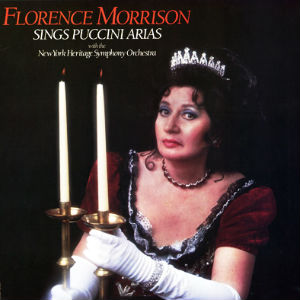
Anthony Tommasini‘s Sunday Times think piece about opera direction (fetchingly adorned with the Susannesque headline “Halfway Won’t Do”) is online now. La Cieca thinks TT’s heart is in the right place (and of course she’s still all aglow after the Babs interview), so she’s going to stay mum about that Herbert Wernicke production of Die Frau Ohne Schatten that he and so many others seem to regard as the bees’ knees.
However, your doyenne would be remiss if she did not challenge Tony’s reasoning behind the candle business in Tosca. You can read the article yourself (hey, it’s free) but essentially he builds the case that the Sarah Bernhardt dumbshow that can so be so effective in the theater necessarily has a thematic meaning, i.e., as an expression of the diva’s deep and abiding Catholic faith.
Unfortunately, this reasoning strikes me as circular, and La Cieca would even go so far to say that in this instance Tommasini begs the question. And you cannot even know how overjoyed your doyenne is to have a chance to use that expression in its correct sense. But hold your applause for my usage until you hear out my reasoning.
It seems to La Cieca that audiences (among them Mr. Tommasini) tend to fasten on to a somewhat sentimentalized characterization of Tosca as “deeply religious,” based at least in part on her business with the candles and the crucifix. And since she is deeply religious (that’s already been established, you see), the placing of the candles must surely then be an expression of her sincere faith. And how do we know that faith is sincere? Well, the candles, stupid.
Now, La Cieca is perfectly willing to agree that the traditional business is consistent with deep religious conviction, but she does not think that only a deeply religious woman would resort to this action. Placing the candles is also consistent, I think, with a rather childish, superstitious woman who thinks she is breaking a jinx she has placed on herself. Or, for that matter, it could even be the behavior of an unbalanced diva who lives her entire life as a sort of grand performance; the candle bit, then, would be just the Bill Sampson touch to round out the murder with a touch of the romantic-gothic.
But if it can be conceded that Tosca might be something other than the Tommasini-prescribed Mother Teresa in a tiara, then the whole “she has to do this because she’s so religious” argument falls apart. This is not to say that a singer and a director cannot decide they want to portray Tosca as “deeply religious” (after all, this interpretation is consistent with the text) but simply that this portrayal is not the only valid one.
So the fuss about the candles is, I think, overblown. It is (or anyway was) an extremely effective piece of stage business, great “theater,” and no one is suggesting it be permanently discarded. But it’s not nearly as meaningful (or crucial) as some more literal-minded spectators seem to believe it is.
A final justification La Cieca would like to propose for the sometime omission of the candle business is that it is so familiar as to have lost the bulk of its impact, which at least at the beginning was based on the element of surprise. Naturally, when Sarah did it, it continued to hold interest, because it was Sarah doing it. Over the years, though, the candle bit has been done so often that it has become a ritual, and as too often happens in the repetition of a ritual, the original meaning and purpose is slighted as the precision of the performance becomes fetishized.

























Comments